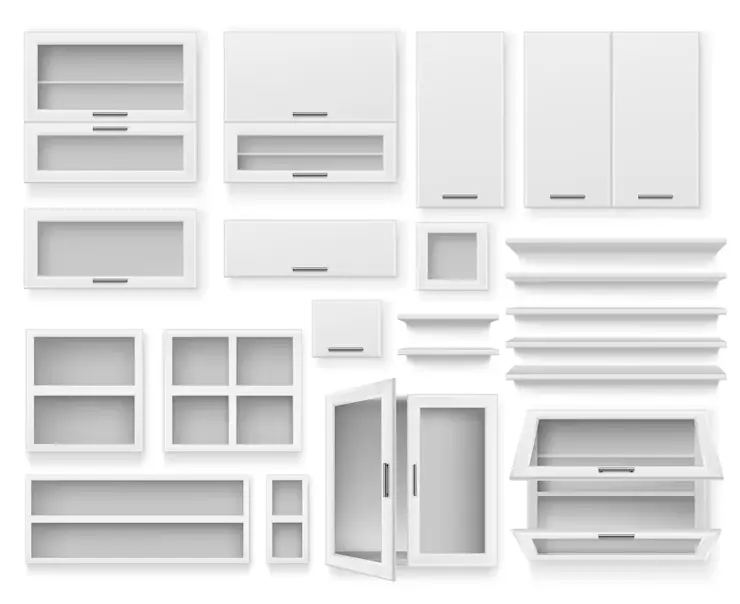✨ Quickly Summarize This Post Using AI
Introduction to Shelving Brackets
If you’ve ever struggled with how to put up shelving brackets that ended up slanted, wobbly, or collapsed underneath stress, you are no longer on my own. Installing shelving brackets nicely may appear honest, but doing it the right manner can save you heaps of frustration down the line. This manual walks you through the whole lot — from planning to mounting and styling — to help you get solid, straight, and elegant shelves up for your wall like a true pro.
Why Proper Installation Matters
Let’s be actual — nothing’s more annoying than a crooked shelf. Not the most effective, but it is an eyesore, and it can be dangerous. Imagine loading up a shelf best for it to crash down, negative your valuables or even injuring someone. That’s why putting in shelving brackets in the right manner is crucial. It ensures your cabinets can endure the load, look smooth, and close for years.
Tools and Materials You’ll Need
Before you even think about drilling holes, let’s get your toolkit sorted. Here’s what you need:
- Drill and drill bits
- Level – to keep everything straight
- Stud finder – for locating solid support
- Tape measure – measure twice, drill once!
- Pencil or chalk – to mark where you’ll drill
- Screws and wall anchors – suitable for your wall type
- Screwdriver or electric driver
- Shelving brackets depending on shelf weight and style
- Shelf boards – cut to size for your space
Having this gear accessible before you start makes the whole method smooth. Don’t skip this step — not anything’s worse than getting midway via only to comprehend you’re missing the proper screws or forgot the anchors. Trust me, it’s worth double-checking!
Planning Your Shelf Installation
Choosing the Right Wall Location
Not every wall is built equal. Choosing the right spot is essential — not just aesthetically, but structurally. Ask yourself:
- What will the shelf be used for? If you’re storing books or heavy items, you’ll need extra support.
- Is the wall drywall, plaster, or brick? Each surface needs a different mounting method.
- Will it be near furniture or doorways? Ensure it’s not in the way or at risk of being bumped into.
Consider lighting, room flow, and even ceiling height. A shelf that looks good in one corner might feel out of place in another. Always visualize before you drill.
Pro tip: Use painter’s tape to outline where the shelf will go. Step back and get a sense of the look before making it permanent.
Measuring and Marking for Accuracy
Measure twice, drill once — it’s the golden rule of DIY. Accurate measurements are the backbone of a robust stage shelf. Start by measuring the length of your shelf and decide how many ways aside you need the brackets. Typically, for shelves as much as 36 inches, position the brackets no more than sixteen–24 inches aside. For heavier objects, use extra brackets for additional help.
Once you have your spacing, use a pencil to mark where each bracket will pass. If you’re mounting multiple shelves, use a tape degree and level to keep them aligned vertically and horizontally. Trust me — the five minutes to get this right makes a large distinction.
Types of Shelving Brackets

L-Brackets
L brackets are the most commonplace and versatile kind. They’re shaped like the letter “L” (wonder!) and mount immediately underneath the shelf, imparting an amazing mix of assistance and ease. These are first-rate for closets, garages, kitchens, or anywhere you need a sturdy, reliable garage.
L brackets come in exclusive sizes and materials. Steel is high-quality for heavy-responsibility jobs, whilst decorative brass or bronze can blend into your interior layout. Just make sure your screws match each your wall type and the bracket’s holes.
Floating Brackets
If you’re going for a clean, minimalist vibe, floating brackets are your quality guess. These are hidden in the shelf, giving the phantasm that the shelf is floating on the wall. They’re glossy, present day, and first rate aesthetic — but they need more precision to install.
Floating brackets paintings first-rate while installed into studs due to the fact they regularly carry lots of weight without seen help. If not properly anchored, they can without problems tilt or pull out of the wall. Always comply with the producer’s instructions and use the furnished templates if available.
Heavy-Duty Brackets
Need to shop for a toolbox, kitchen appliances, or a stack of textbooks? Heavy-responsibility brackets are the powerhouse of shelf aid. These are frequently bolstered with crossbars or are available in larger metal designs. They’re no longer the prettiest, but when electricity is your priority, they’re your move-to.
These brackets require right alignment and are normally screwed into wall studs for max protecting energy. Some even come with assist hands for added reinforcement. Just make sure the shelf cloth you use is similarly robust — no factor in the usage of a heavy-obligation bracket with a flimsy board!
Preparing the Wall
Studs vs Drywall Anchors
One of the primary selections you’ll need to make earlier than drilling is whether to mount your brackets into wall studs or use drywall anchors. This isn’t just a technical element — it’s vital to the safety and longevity of your shelving.
But from time to time, your preferred shelf placement doesn’t line up with a stud. That’s where drywall anchors are available. Anchors are designed to make bigger holes behind the drywall, imparting aid even without a stud. Here’s a brief evaluation table:
| Feature | Wall Studs | Drywall Anchors |
|---|---|---|
| Max Weight | Very high (100+ lbs) | Moderate (20–75 lbs) |
| Tools Needed | Drill, Screws | Drill, Anchors, Screws |
| Reliability | Very strong | Good (if used correctly) |
| Ideal For | Bookshelves, kitchen storage | Light decor, small shelves |
Always check the packaging of your anchors for weight ratings, and never exceed them. Better safe than sorry!
Finding Wall Studs with a Stud Finder
So, how do you find those magical studs? Simple — clutch a stud finder. This nifty tool scans via drywall and beeps or lights up when it detects a stud behind the wall. If you don’t have one, you could also attempt the old college method: knock along the wall and concentrate for a stable thud (a stud) versus a hollow echo (no stud). But without a doubt? Stud finders are reasonably priced and plenty extra correct.
Drilling Pilot Holes
Now that you’ve marked your bracket positions and observed your studs or anchor points, it’s time to drill pilot holes. This step is regularly skipped by impatient DIYers — and that’s a massive mistake. Pilot holes make it easier to drive in screws, save you wall harm, and decrease the danger of your wall splitting or cracking.
Use a drill bit barely smaller than your screw diameter. For instance, in case you’re the usage of a three/16-inch screw, a 1/eight-inch pilot hollow is generally best. Drill directly and regular, and don’t cross too deep — just enough to guide the screw.
Installing the Shelving Brackets
Leveling the Brackets
There’s nothing worse than stepping lower back and knowing your new shelf looks as if it’s sliding downhill. Avoid this catastrophe by leveling your brackets before securing them to the wall.
If you’re installing more than brackets, use the extent to check each one and degree the gap between them for even distribution. Also, make certain all brackets are aligned vertically and horizontally. This is especially important for multiple shelves or long ones — misalignment can lead to sagging or failure under pressure.
Securing Brackets into the Wall
With pilot holes drilled and positions marked, it’s time to screw those brackets in area. Align your bracket with the hollow, preserve it firmly, and force your screws into the wall using a screwdriver or electric powered drill. If you’re screwing into a stud, use wood screws. For drywall anchors, use the screws that came with them — they’re designed to grip nicely.
Be careful not to over-tighten, particularly in drywall. Overdriving screws can strip the hole or damage the bracket. You need the bracket cushty and stable — no wobble, no supply.
Double-Checking Stability
After all the brackets are installed, do a final stability test. Push on each bracket lightly to make certain they’re firmly attached. If there’s any motion or looseness, look at it now rather than including the shelf. Tighten screws or update anchors as wanted.
If your brackets bypass the check, congratulations — you’ve made it through the hardest component! Take a 2d to admire your work. The subsequent step is attaching the shelf itself — and that’s where things get fun.
Looking to create a stylish yet sustainable space? Check out our guide on How to Achieve a Stylish Yet Eco-Friendly Interior Design for expert tips on transforming your home with eco-friendly interior design choices!
Safety Checks and Final Adjustments
Before loading up your shelf with books, plants, or your collection of quirky coffee mugs, do a few final checks:
- Weight Test: Apply some gentle downward pressure in the middle of the shelf and on each side. There should be no movement at all. If there is, troubleshoot before placing items.
- Wall Inspection: Look around the bracket areas for any signs of wall damage or pull-out. If you see hairline cracks or movement in the drywall, remove the shelf and reinforce your anchors or switch to stud mounting.
- Screw Tightness: Make sure all screws — both in the wall and on the shelf — are tight. Loose screws can loosen more over time and lead to shelf collapse.
- Leveling: Do one final level check. Shelves can sometimes shift slightly as they’re being secured, so it’s worth verifying that your shelf is still even.
Once you’ve passed all the checks, congratulations! Your shelf is up, secure, and ready to be styled to perfection.
FAQs(Frequently Asked Questions)
Q: How do you hang a shelf with brackets?
A: To hang a shelf with brackets, mark the desired location on the wall, locate studs, install brackets using screws, and place the shelf on top, securing it if necessary.
Q: What is the rule for shelf brackets?
A: A general rule is to place brackets no more than 24 inches apart and ensure they align with wall studs for optimal support.
Q: Do shelves need to be screwed into studs?
A: While it’s best to screw into studs for maximum support, if that’s not possible, use appropriate wall anchors to secure the brackets.
Q: How do you secure wood shelves to brackets?
A: Some brackets have screw holes underneath. Drill pilot holes into the shelf and use screws to attach it to the brackets, preventing movement.
Conclusion
Installing shelving brackets might look like an easy weekend assignment; however, as you’ve seen, there’s a lot more to it than simply choosing up a drill and going for it. From selecting the right wall and identifying studs to ensuring everything is staged and stable, every step plays an important role in making sure your shelves look tremendous and live up to your expectations.
So, take your time, plan smart, and don’t bypass the little details. With the recommendations and techniques we’ve provided right here, you’re more than ready to show any blank wall into an elegant, storage-pleasant function that’s both practical and Pinterest-worthy.



